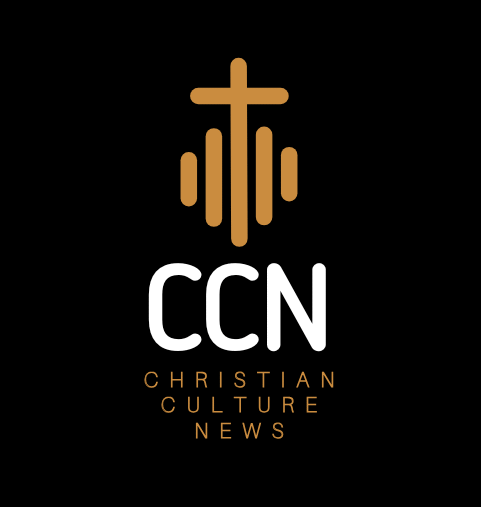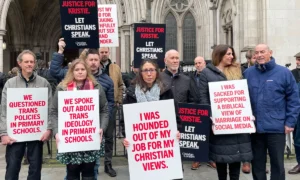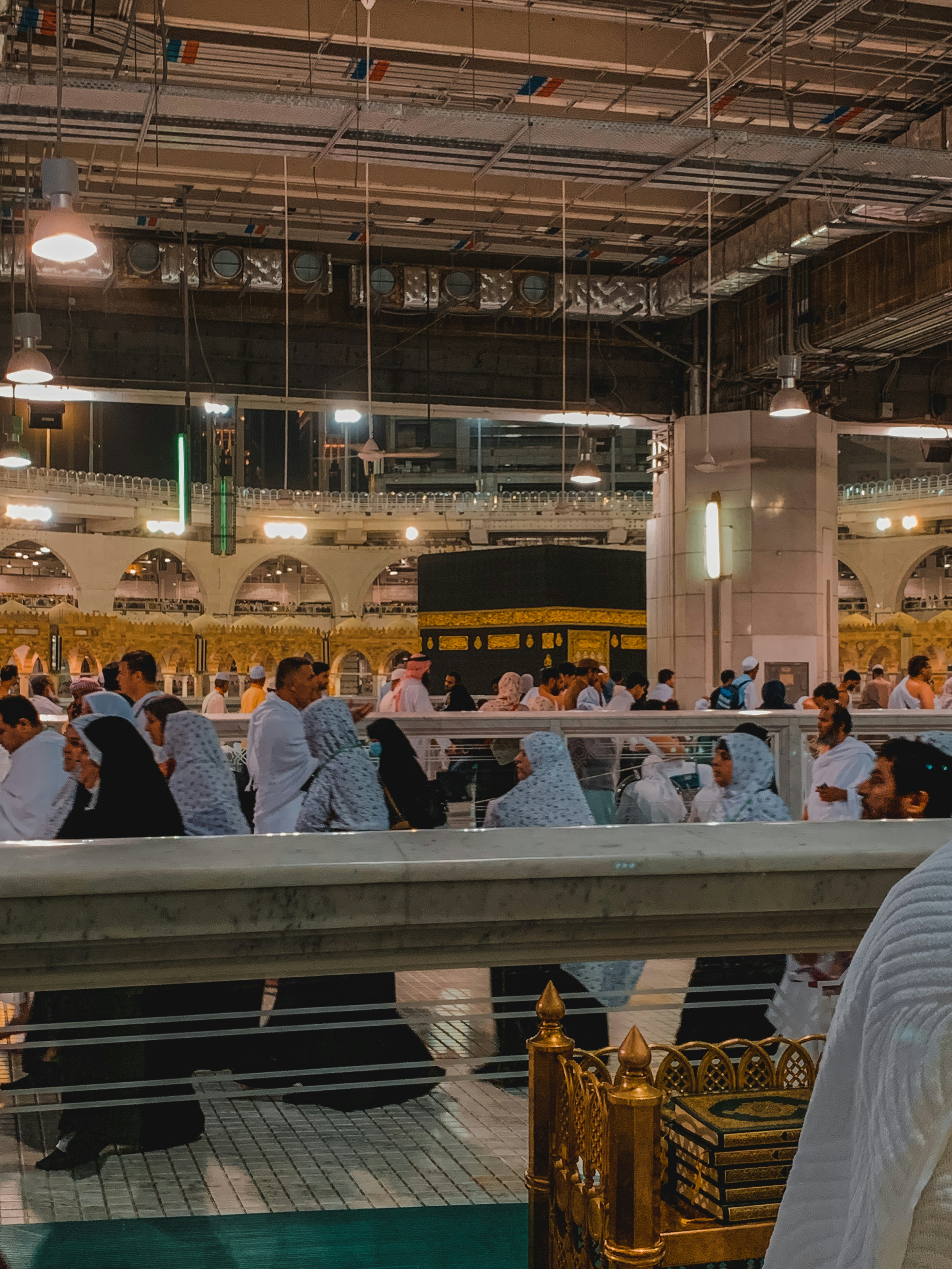U.S. Supreme Court Blocks Taxpayer-Funded Religious Charter School in Oklahoma

separation of church and state
https://youtu.be/_N9Ir7DXkZQ
Introduction to the Case
In a pivotal recent decision, the U.S. Supreme Court addressed the contentious issue of taxpayer-funded religious charter schools in Oklahoma. The case arose after the proposed establishment of a charter school that intended to incorporate religious teachings into its curriculum, prompting a significant legal challenge. The parties involved included the charter school proponents seeking funding and various advocacy groups dedicated to maintaining the separation of church and state within public education. This case has highlighted the broader implications of funding religious institutions through taxpayer dollars and the legal interpretations surrounding the First Amendment.
The legal questions at the heart of this case revolved around whether the government could lawfully fund a charter school that provides a religious curriculum and how such funding aligns with constitutional stipulations regarding the establishment of religion. The plaintiffs argued that allowing taxpayer money to support a religiously affiliated school undermines public education principles and violates the Establishment Clause. Conversely, supporters of the charter school contended that it offered parents a choice in educational opportunities without infringing on constitutional rights.
This Supreme Court decision not only affects the proposed religious charter school in Oklahoma but also sets a precedent for similar cases across the United States. The ruling underscores the ongoing national debate about the intersection of education, religious liberty, and taxpayer funding, which is critical in shaping education policies and determining the extent to which religious institutions can receive public support. As such, the outcome of this case signals potential shifts in legal interpretations regarding the role of religion in publicly funded education, reflecting broader societal values and tensions surrounding these issues.
Background on Charter Schools
Charter schools are publicly funded educational institutions that operate independently of the traditional public school system. Established in the 1990s, these schools emerged as a response to the perceived shortcomings of conventional education. Charter schools aim to provide innovative and flexible educational environments, fostering greater accountability and improving student outcomes. Each charter school is overseen by a charter, a legally binding agreement that outlines the school’s mission, educational approach, and performance expectations.
The funding of charter schools primarily comes from state and federal sources, akin to regular public schools. However, charter schools typically have more autonomy in how they allocate these funds, which often leads to variations in spending practices. In many instances, they receive per-student funding based on enrollment numbers. This model encourages them to attract more students in order to secure additional funds, but it can also lead to competition with traditional public schools for limited financial resources.
Charter schools are subject to both state and federal regulations, which govern their establishment, operation, and oversight. Each state has its own laws dictating how charter schools are authorized and monitored, resulting in significant variation in governance and accountability standards across the country. For example, while some states impose strict oversight, others allow for greater flexibility, potentially impacting the quality and consistency of education provided.
Historically, the charter school movement has been influenced by a combination of educational reform initiatives and debates over school choice. Supporters argue that charter schools enhance educational options for families and foster innovation in teaching methods, while critics contend that they may undermine traditional public schooling and lead to inequities in educational access.
The Religious Aspect of the School
The charter school at the center of this Supreme Court case is affiliated with a specific religious denomination, which shapes its overall educational philosophy and approach. This religious connection is significant, as it informs various aspects of the curriculum designed for students. The school’s mission emphasizes the integration of religious teachings with general education, promoting both academic achievement and spiritual development among its learners. Such an integrated approach raises critical questions regarding the intersection of public education and religious instruction, particularly when taxpayer funds are involved.
The proposed curriculum at this charter school includes components such as Bible studies, ethics based on religious principles, and a worldview informed by its denominational beliefs. This has stirred debate about the appropriateness of public funding for institutions that explicitly incorporate religious teachings into their educational frameworks. Critics argue that this could lead to the establishment of a religious doctrine within public schools, contravening the established separation of church and state as upheld by various legal precedents.
Legal precedent plays a vital role in this discussion. Previous Supreme Court decisions, including those concerning the allocation of public funds to private religious schools, have outlined boundaries regarding the extent to which religious institutions may benefit from government support. These rulings emphasize that any mixing of public funds with religious instruction could undermine the secular foundation of the education system. As the Supreme Court continues to navigate these complex issues, the implications of its decision will have far-reaching consequences for the future of public education, particularly in how it relates to religious entities seeking state funding.
Supreme Court Proceedings
The case regarding the taxpayer-funded religious charter school in Oklahoma marks a significant moment in the evaluation of the intersection between public funding and religious education. Initially, the case was filed in a lower court, where plaintiffs argued that funding a religious charter school violated the Establishment Clause of the First Amendment. This group emphasized the necessity of maintaining a clear separation between church and state, asserting that taxpayer money should not support religious institutions.
Conversely, the school’s advocates contended that denying funding to religious charter schools was a form of discrimination that infringed on religious freedoms protected under the First Amendment. They argued that the denial of funding limited parental choices and the potential for a diversified educational environment. As the case progressed, important legal principles related to the First Amendment and the Equal Protection Clause were brought into focus during the hearings. Both sides presented extensive evidence, with the proponents of the religious school citing case law that they believed supported their position, including previous decisions where religious organizations received government funds.
The Supreme Court’s review involved a careful analysis of relevant precedents, particularly those addressing the balance between supporting religious institutions and adhering to constitutional mandates. Arguments centered on whether public funding for religious schools could be viewed as an endorsement of a particular faith, thus raising constitutional concerns directly related to the Establishment Clause. Throughout the proceedings, justices showed a keen interest in how these principles would play out in the broader context of educational access and religious liberty.
The Court’s Decision
The U.S. Supreme Court’s recent ruling regarding the taxpayer-funded religious charter school in Oklahoma has significant implications for the intersection of education and religion in the United States. In the majority opinion, the Court asserted that funding a charter school closely affiliated with a religious organization violates the Establishment Clause of the First Amendment. The Establishment Clause prohibits the government from establishing an official religion or unduly favoring one religion over another, ensuring that taxpayer funds do not support religious activities.
The Court’s majority highlighted the importance of maintaining a clear separation between church and state, a fundamental principle deeply rooted in American jurisprudence. They argued that state funding of a religious charter school could undermine public trust in the secular nature of the educational system. Such funding could potentially lead to the promotion of specific religious views in a publicly funded environment, which the Constitution seeks to avoid.
On the other hand, the dissenting opinions emphasized the potential benefits that a religious charter school could provide to underserved communities. Dissenting justices contended that the ruling could hinder educational choices for parents seeking faith-based schooling options for their children. They argued that if a school meets the same educational standards as any public school, its religious affiliation should not preclude it from receiving government funding. This perspective also considered the growing movement for school choice, which includes the expansion of charter schools in various forms, including those affiliated with religious organizations.
The Supreme Court’s decision underscores the ongoing legal debates surrounding the appropriate boundaries of government support for religious education. As this issue continues to evolve, stakeholders in both the education and legal sectors will closely monitor the implications of this ruling on future cases and the broader landscape of education policy in the United States.
Implications of the Ruling
The recent decision by the U.S. Supreme Court to block taxpayer-funded religious charter schools in Oklahoma holds significant implications for the landscape of public education across the nation. This ruling reinforces the constitutional principle of separation of church and state, particularly regarding the use of public funds for religious education. By denying the establishment of a charter school that integrates religious instruction funded by taxpayers, the Court has set a precedent that may affect future proposals for similar institutions.
One of the immediate consequences of this ruling is the potential impact on the funding structure of charter schools in general. Advocates of charter schools often argue for increased flexibility in funding, which can include sources from both public and private donations. However, with the Supreme Court’s explicit stance against taxpayer money being allocated to religious programs, there may be increased scrutiny over how state funds are utilized within these educational frameworks. Public schools are designed to serve all students without religious bias, which underscores the necessity for clear boundaries between secular education and religious instruction.
Moreover, this ruling is likely to influence the approach of religious entities considering charter school initiatives. As these groups evaluate their options for establishing educational institutions, they will need to navigate this complex legal landscape that emphasizes maintaining a secular educational environment. The decision could also deter future efforts to establish religious charter schools, as potential stakeholders assess the increased risks associated with public funding in light of the Court’s ruling.
Overall, the implications of the U.S. Supreme Court’s decision extend beyond the immediate case in Oklahoma. They may prove to shape the future dialogue surrounding educational reform and the financing of public charter schools across the United States, encouraging a reevaluation of the balance between public education and religious influence in state-funded institutions.
Reactions and Opinions
The recent decision by the U.S. Supreme Court to block the establishment of a taxpayer-funded religious charter school in Oklahoma has elicited a wide array of reactions from various stakeholders. Educators have expressed concerns regarding the potential implications for public education funding and the separation of church and state. Many believe that this ruling upholds essential constitutional principles, ensuring that public resources are not diverted to religious institutions. The potential for decreased funding for traditional public schools remains a significant worry as advocates for public education emphasize the importance of equitable resource allocation.
Religious organizations, on the other hand, have reacted with disappointment. Many members of these organizations argue that this decision undermines their right to establish educational institutions that reflect their values and beliefs. Some view the court’s ruling as indicative of a broader trend in which religious expression is increasingly constrained within public spheres, thereby stifling the educational opportunities available to families seeking faith-based options for their children.
Policymakers have also voiced their opinions on this landmark ruling. Some legislators have rallied in support of the Supreme Court’s decision, framing it as a necessary step to maintain the secular nature of public education. Others, however, have called for legislative actions that could open avenues for future endeavors similar to those proposed by the religious charter school initiative. Advocacy groups have chimed in as well, with some applauding the ruling as a victory for secular education, while opponents argue it represents an infringement on parental choice and religious freedom.
Public opinion remains divided, with a significant portion of the population backing the court’s stance on maintaining the separation of church and state in educational settings, while others voice their support for the inclusion of faith-based educational alternatives. Expert analyses of the ruling suggest that this decision will have lasting impacts on the future landscape of charter schools and public education funding in the United States.
Future of Religious Charter Schools
The recent ruling by the U.S. Supreme Court blocking taxpayer-funded religious charter schools in Oklahoma has set a significant precedent that may influence the future of such institutions across the country. As this legal landscape evolves, various implications arise not only for Oklahoma but also for other states contemplating similar proposals.
One primary consideration following this ruling is the potential for legislative changes at both state and federal levels. Legislators in states that have seen a rise in interest toward religious charter schools may need to reassess their strategies. In some states, where educational policies historically embraced a mixture of secular and religious education initiatives, there may now be an increased push to define what qualifies as permissible under the current legal framework. These changes could reshape how educational institutions are funded and structured, and the application of public funds towards religious education could be further scrutinized.
Moreover, this ruling may encourage legal challenges against existing religious charter schools, prompting a re-examination of their eligibility for funding. Legal experts and advocacy groups will likely monitor these developments closely, as the implications of this decision resonate throughout the education system. New lawsuits or legislative proposals may arise, fueled by a desire to expand or restrict the boundaries of faith-based educational options in public funding.
Educational stakeholders, including parents, teachers, and school administrators, may also respond by advocating for a clearer definition of educational choices that respect both religious freedoms and public interest. As the discourse unfolds, it is vital to consider the diverse perspectives regarding religious charter schools and their role in public education.
In conclusion, the future of religious charter schools in the U.S. appears to hinge on the evolving legal landscape influenced by this landmark ruling, potentially leading to fresh legislative initiatives and public discourse surrounding the role of religious institutions in publicly funded education.
Conclusion
The recent decision by the U.S. Supreme Court to block taxpayer-funded religious charter schools in Oklahoma has significant implications for both education and the separation of church and state. This ruling underscores the ongoing debate surrounding the intersection of public funding and religious education, emphasizing the necessity of maintaining a clear boundary between government support and religious institutions.
Throughout this discussion, we have explored various aspects of the case, including the legal arguments presented, the perspectives of both supporters and opponents of religious charter schools, and the historical context surrounding such educational institutions. The Supreme Court’s determination reinforces the principle that taxpayer money should not be utilized to finance religious-based education, fostering a more inclusive public education system that is accessible to all students, irrespective of their religious beliefs.
Moreover, this ruling invites a broader reflection on the role of religion in public education and the types of institutions that receive government funding. It highlights the importance of ensuring that public resources are allocated to secular educational environments that promote diverse viewpoints and foster critical thinking. As communities continue to navigate the complexities of educational funding, the Supreme Court’s decision serves as a pivotal reminder of the constitutional commitment to uphold a secular framework in public education.
As we move forward, it is crucial for policymakers, educators, and stakeholders to engage in constructive dialogues about the balance between education, religion, and the use of public funds. Such discussions can lead to more informed decisions that respect individual rights while promoting a fair and inclusive educational landscape for all students. By examining these critical issues, we pave the way for a future where education remains a foundational element of our democracy, free from the influence of religious doctrine.











